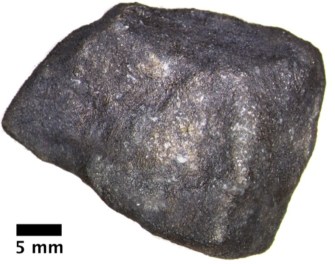Key Takeaways:
- A meteorite crash in Michigan, which occurred on January 16, 2018, not only fascinated onlookers but has now revealed a treasure trove of 2,600 pristine organic compounds from outer space.
- Researchers, utilizing weather radar, successfully located and retrieved fragments of the meteorite from Strawberry Lake in Hamburg, Michigan, preserving them in their original state before exposure to liquid water could alter their chemical composition.
- Philipp Heck, lead author of the study and a curator at the Field Museum, highlighted the uniqueness of the find, emphasizing that the meteorite’s crash on a frozen lake allowed for the preservation of its extraterrestrial organic inventory.
- The meteorite is believed to have originated from an asteroid orbiting between Mars and Jupiter, and despite starting as a 6-foot rock, the portion that made contact with Earth was merely the size of a peach pit.
- The presence of organic compounds, including carbon-containing materials, supports the theory of panspermia, suggesting that essential life ingredients are distributed across the Universe through meteorites.
In a remarkable celestial event over Michigan on January 16, 2018, a meteorite descended from the night sky, crashing into the frozen expanse of Strawberry Lake in Hamburg. Beyond the spectacle, this cosmic intruder held a surprising secret—a recent study has unveiled the presence of 2,600 pristine organic compounds of extraterrestrial origin within the fragments of the meteorite.
Researchers, led by Philipp Heck, a curator at the Field Museum and associate professor at the University of Chicago, employed cutting-edge weather radar technology to meticulously track the meteorite’s descent. This swift action allowed them to gather the scattered fragments before exposure to liquid water could alter their chemical constitution. The meteorite’s unique landing on a frozen lake played a crucial role in maintaining its original state, offering a rare glimpse into its extraterrestrial composition.
The meteorite’s journey began far from Earth, believed to have broken off from an asteroid orbiting between Mars and Jupiter. Despite its initial 6-foot size, only a fraction, comparable to a peach pit, made contact with the frozen landscape of Michigan. NASA’s weather radar proved instrumental in tracking the meteorite’s descent, as it is capable of detecting hail and rain, providing vital information on its position and velocity.
Meteorite hunter Robert Ward, equipped with data from NASA’s weather radar, successfully located the first piece of the celestial visitor within a mere two days. The rapid recovery ensured that the meteorite’s integrity remained intact, allowing scientists to study it in a state closely resembling its condition in space.
The discovery of organic compounds, including carbon-containing materials, on the meteorite provides compelling support for the theory of panspermia. This hypothesis posits that the building blocks necessary for life are disseminated throughout the Universe by celestial bodies such as asteroids and meteorites. The finding opens new avenues for understanding the potential role of extraterrestrial materials in the origins of life on Earth.
The study, published in Meteoritics & Planetary Science, marks a significant contribution to our understanding of the cosmos and the potential sources of organic compounds essential for life. The meteorite’s unique landing and the swift recovery efforts have allowed researchers to explore a pristine extraterrestrial inventory, offering valuable insights into the conditions that may have contributed to life on our planet.
Philipp Heck, commenting on the findings, noted that the meteorite’s minerals remained minimally altered, revealing a rich inventory of extraterrestrial organic compounds. The carbon-rich nature of these compounds hints at the possibility that similar materials delivered by meteorites could have played a role in the formation of life on early Earth.
The discovery opens up new avenues for astrobiological research, providing scientists with a unique opportunity to study extraterrestrial organic materials. By analyzing the composition of these compounds, researchers aim to unravel the mysteries surrounding the origins of life and gain insights into the potential prevalence of such materials in our cosmic neighborhood.
The successful recovery of the meteorite fragments was facilitated by the use of NASA’s weather radar, showcasing the versatile applications of this technology. Beyond its conventional use in tracking weather patterns, radar systems play a crucial role in celestial events, aiding scientists in locating and preserving extraterrestrial materials for in-depth analysis.

The groundbreaking findings from the Michigan meteorite crash site pave the way for future collaborations and explorations in the field of astrobiology. Scientists are eager to delve deeper into the wealth of organic compounds, exploring their implications for the broader understanding of life’s cosmic origins.


